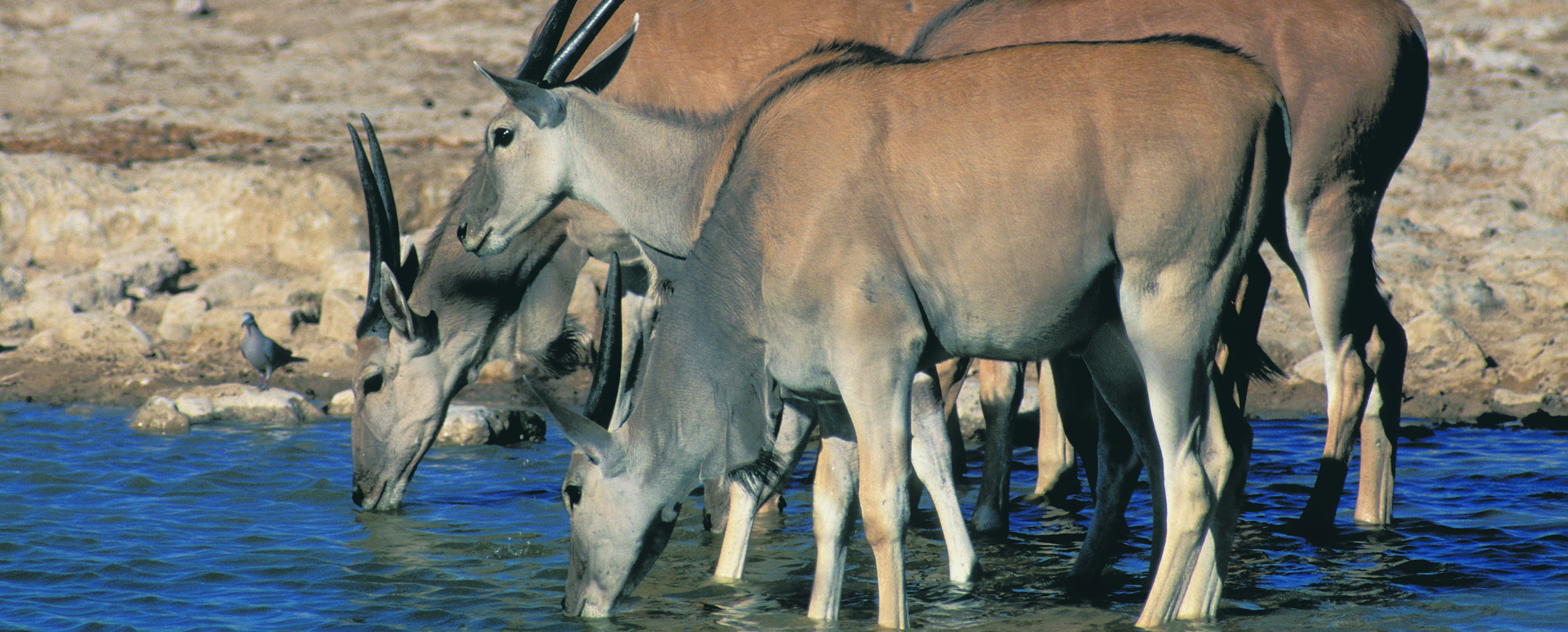
ELAND
Taurotragus oryx
T he eland antelope is the largest and heaviest antelope. Surprisingly, however, eland are excellent “jumpers” that can skip farm fences of more than two meters in height. Eland are found in Namibia mainly in the northern and northeastern part of the country, near Otjiwarongo. They are very shy. They usually live in the densest bush, so it is not easy to spot a good bull. Eland live in large herds, which mostly consist of female eland and their young. The old bulls usually live in isolation and are only seen during the mating season. The joints of the eland create an audible, clicking sound when walking. In Namibia, eland are usually hunted close to water. Eland are very cautious animals, so take wind direction into consideration and avoid any noise. It is a difficult task hunting an eland and therefore very attractive. If the eland bull has settled during the late morning, the matter becomes relatively hopeless if the bush is thick. This hunt is extremely difficult in the thick bush in the northern parts of Namibia. The most powerful bulls form a bachelor herd. The best time to hunt is at the end of the rainy season or early in the winter, when there is not so much foliage on the ground. It should be remembered that the eland antelope is extremely bulky when choosing the type of bullet for the hunt. A heavy caliber of 9.3 or more is advisable. The bull is considerably larger and heavier than the cow. Cows, on the other hand, are somewhat disproportionate and the horns are usually somewhat uneven. Old bulls have a large throat flap, beginning at the throat and going down to the sternum. The throat flap is much smaller in cows. Old bulls are colored blue-gray, especially in the front half, and have a clearly recognizable bristle “mane” on their foreheads. Cows and young bulls lack the “forehead” mane and they are pale yellow or brownish. Worn, uneven horns of old bulls are particularly impressive.
ELAND
Taurotragus oryx
| Shoulder Height: | 160 – 180 cm |
| Mass: | Male: 600 – 900 kg | Female: 500 – 600 kg |
| Diet: | Grazer |
| Rut: | January – February |
| Life expectancy: | 25 years |
ELAND TRACK

